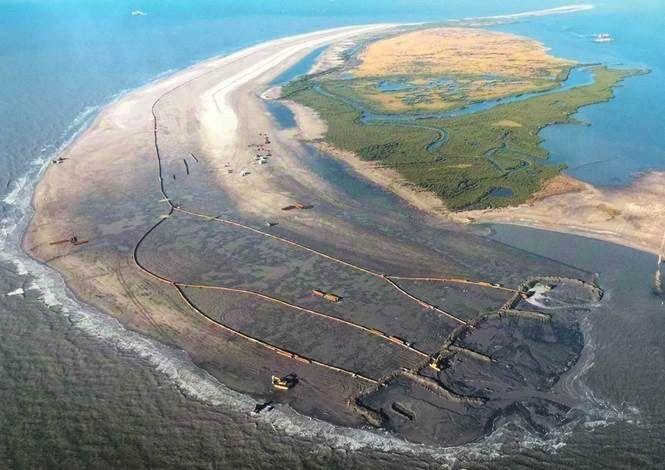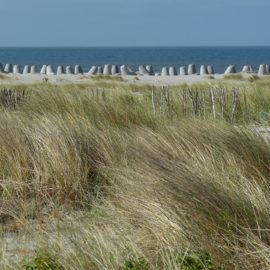
The symbolism is there as money can be a barrier. Of course if we had a shoreline like this coastal restoration would not be a problem!
Louisiana’s expensive fight against land loss is headed for a “fiscal cliff,” with the bulk of coastal restoration funding set to run out by 2032, a state watchdog group warned in a new report. The state’s 50-year Coastal Master Plan relies heavily on $8.7 billion in fines and settlement dollars stemming from the 2010 BP Deepwater Horizon oil disaster. That money is going fast, with dozens of ambitious projects, including barrier island rebuilds, marsh plantings and Mississippi River sediment diversions, already completed or planned in the next few years. “Louisiana’s largest sources of money to pay for coastal restoration and protection work will run dry within the next decade, leaving the state far short of the cash needed to fulfill its master plan, respond to climate change and safeguard its residents and businesses,” the Public Affairs Research Council of Louisiana report said. The state doesn’t have all the money needed to cover the $50 billion coastal plan. State surpluses, federal disaster recovery money and other revenue sources “provide short infusions of cash” but the largest, most dependable funding source is tied to the BP spill – “at least until the looming expiration date,” the report says.
We lose a lot of land hourly so the money is essential.
Louisiana is losing land at a rate of a football field every 100 minutes. The causes are varied: rising sea levels, erosion from oil and gas canals, land subsidence, hurricanes, and river levees, which prevent sediment from rebuilding coastal floodplains. The report’s findings were “not a surprise” for the state Coastal Protection and Restoration Authority, said Bren Haase, the agency’s executive director. “We’ve fortunately had a successful coastal program the last dozen years because we’ve had the science, the political will and significant funding to accomplish our goals,” he said. “But we really are approaching a time of significantly reduced funding.” Haase stressed that the state is searching for other funding streams. “We have not sat idle,” he said. State leaders are pinning their hopes on federal legislation that would boost Louisiana’s share of revenue from Gulf of Mexico oil and gas and create new streams of revenue from planned offshore wind energy projects.

CPRA
In Congress, Sen Cassidy is helping with legislation.
The Reinvesting In Shoreline Economies and Ecosystems Act, a bill co-authored by Sen. Bill Cassidy, R-La., could give the state an additional $1.9 billion from oil and gas over the next decade and channel a nearly 38% share of federal offshore wind fees and royalties to states with wind farms near their coasts. Similar legislation by U.S. Reps. Steve Scalise, R-Jefferson, and Troy Carter, D-New Orleans, would increase the share of wind and fossil fuel revenue to states to 50%. Louisiana is projected to receive about $165 million over the next two years from the current federal revenue-sharing program. But PAR notes that energy revenues are wildly unpredictable. Oil and gas prices, production declines, policies restricting drilling and offshore lease sales, and a global shift to renewable energy sources all can affect the funding the state draws from fossil fuel revenues. “Each financing stream can seesaw from external impacts that aren’t in state control, creating uncertainty for the coastal efforts,” PAR said. Offshore wind projects aren’t likely to fill the gap. Wind farms typically have high start-up and development costs and low profit margins. And while the federal government charges for offshore wind lease areas, there are currently no revenue-sharing provisions. PAR urged Louisiana leaders to plan for a future in which penalties for oil spills are not the main funders of coastal restoration. “They must recognize the 2032 fiscal cliff facing the state’s vital coastal preservation work and start deciding how they’ll fill the gap,” the report said. Haase agreed. Finding the money is essential for south Louisiana’s survival, he said. “Quite frankly, the alternative is unthinkable,” he said. “It’s something we must do if we’re going to continue to live and work on our coast.”
He is right an oil spill may bring in money but it is a bad trade off. We do need a steady stream.



